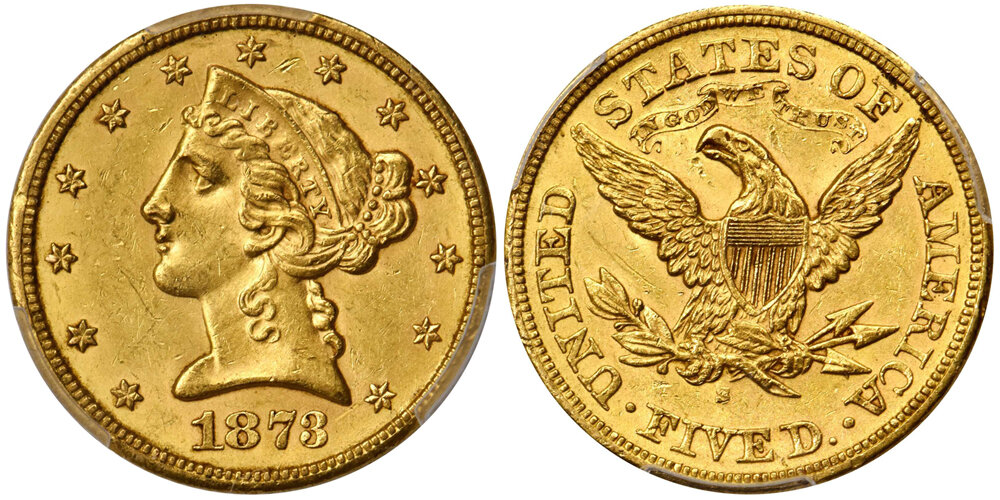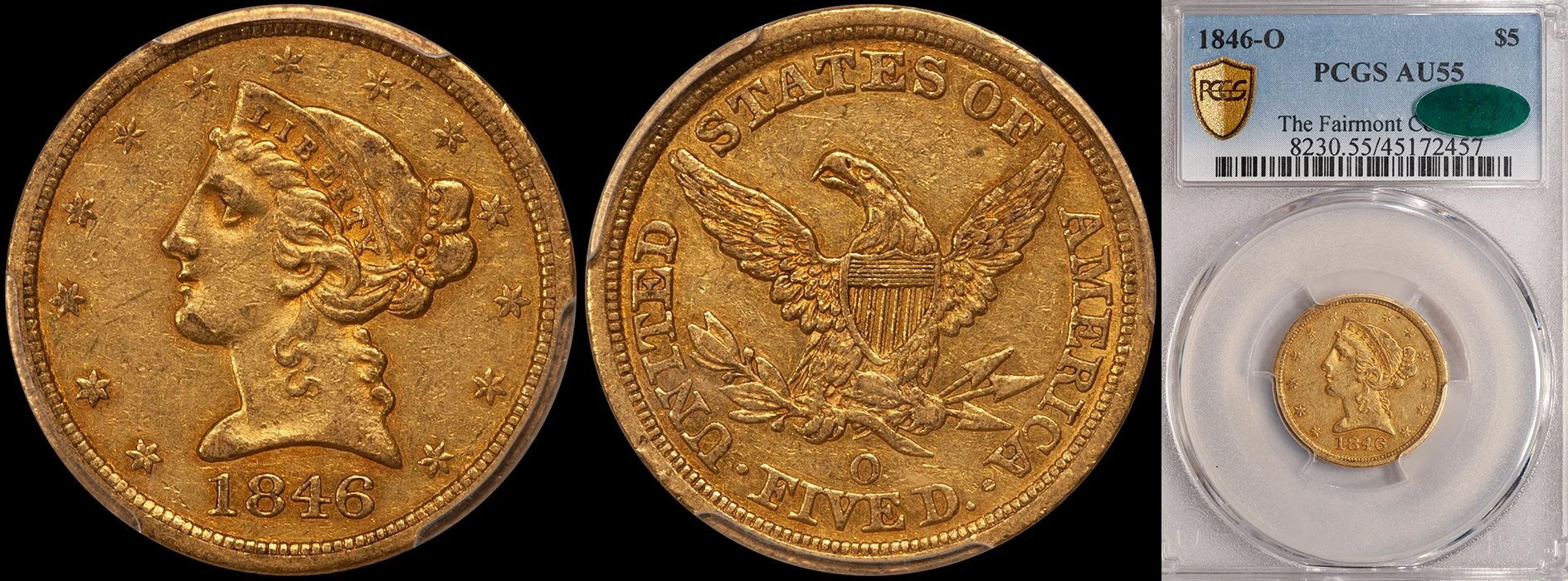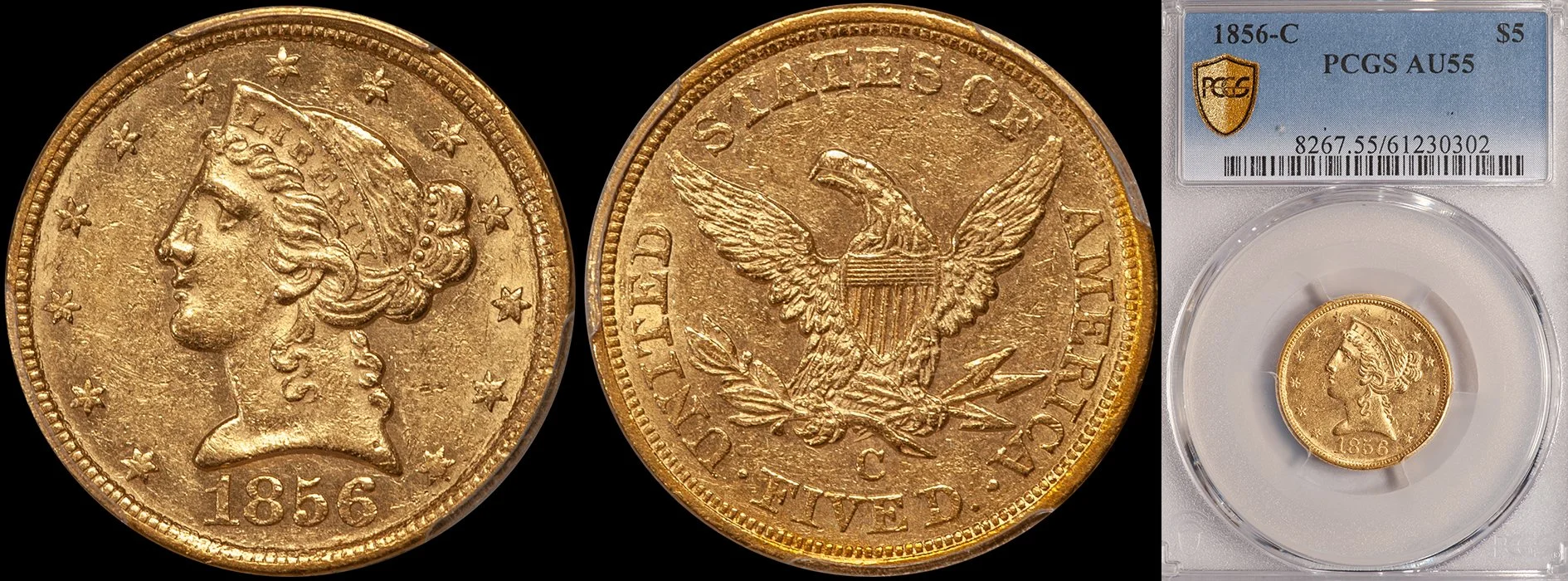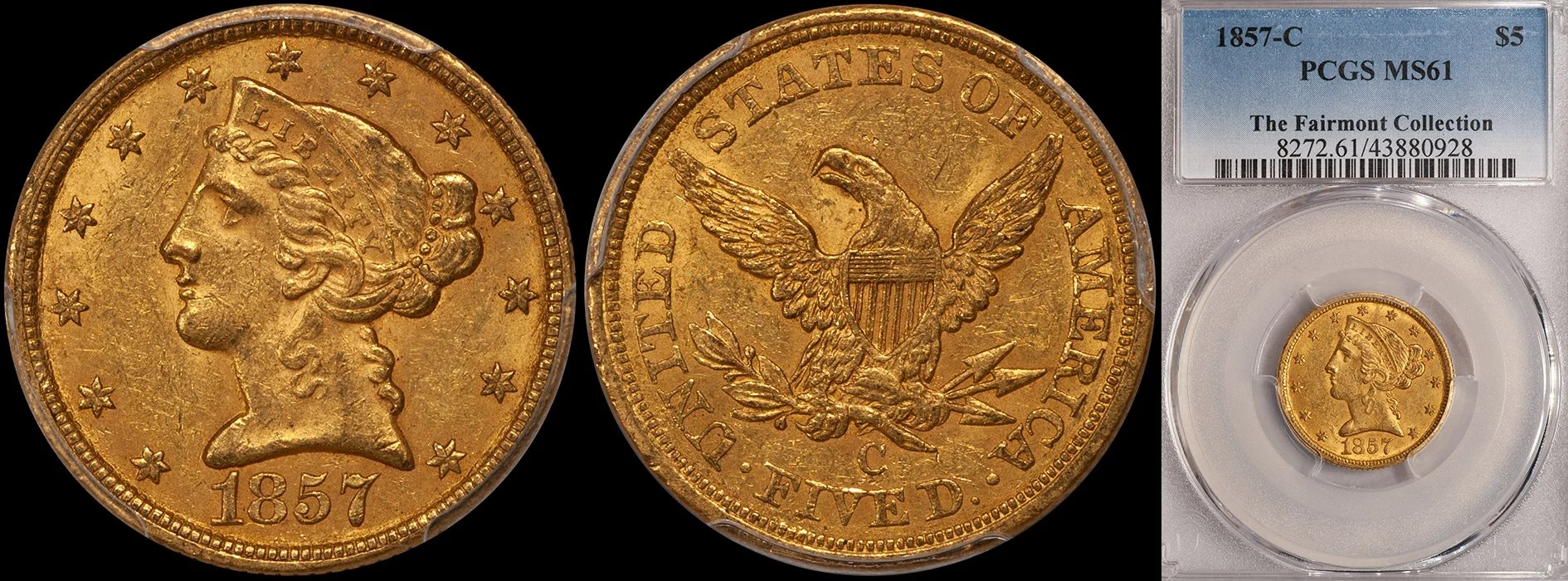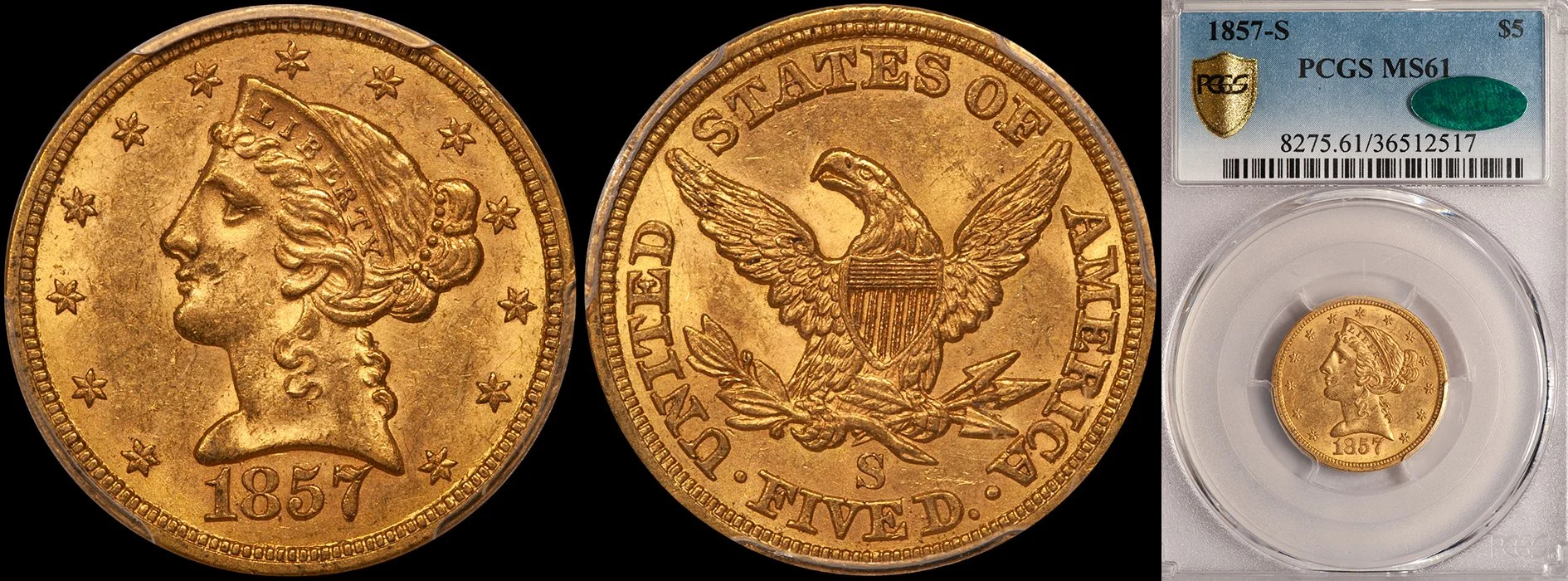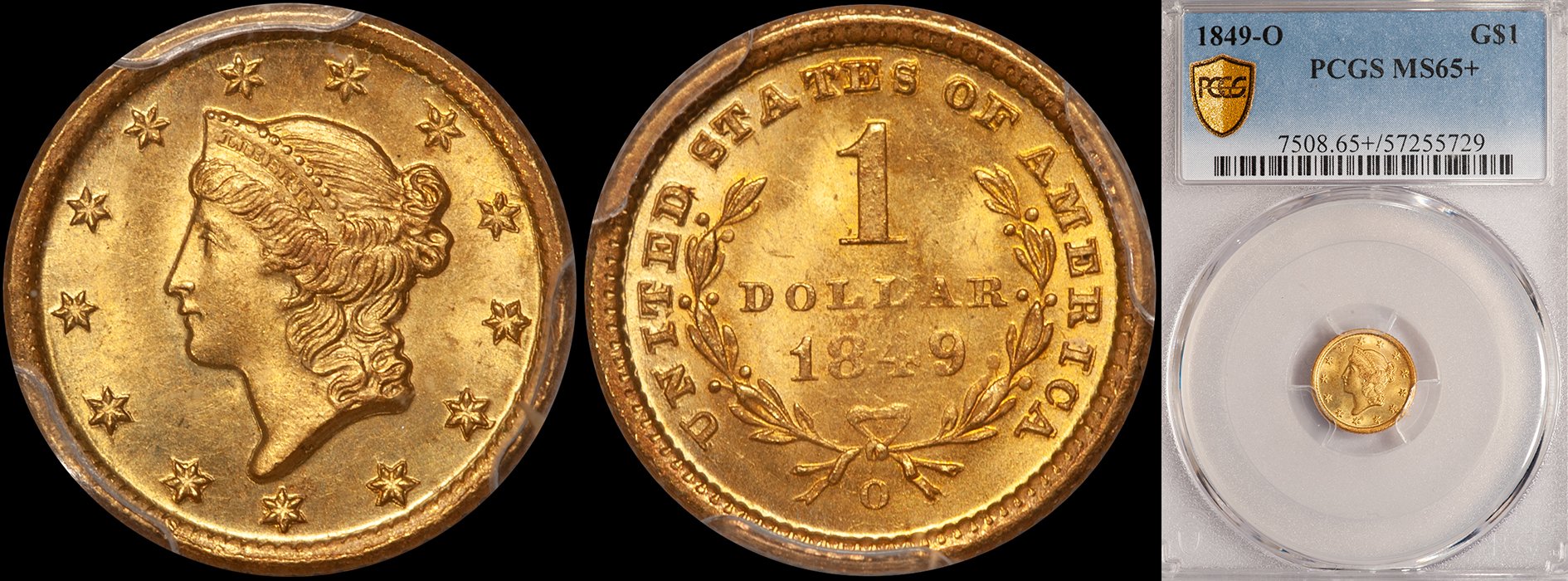What I Learned About Liberty Head Half Eagles from the Fairmont Hoard
/In their August 2020 auction, Stack’s Bowers introduced the numismatic world to another facet of the seemingly limitless hoard that is the Fairmont Collection: a comprehensive date run of Liberty Head half eagles.
We’ve come to expect large hoards of double eagles from overseas sources, as both Liberty Head and St. Gaudens types have been repatriated in large quantities since after the end of World War II. While I am aware of some smaller hoards of half eagles, especially Indian Head issues, the Fairmont coins offer us a pretty unique perspective on many facets of Liberty Head half eagles: their appearance, their natural color and surfaces, varieties, how they wore in circulation, which dates appear in the hoard and which do not, and more.
It should be noted that the following observations are based on a small sample size. I’m assuming that there are far fewer Liberty Head half eagles in the Fairmont Collection than there are Liberty Head double eagles. But I don’t know anything about quantities: are there two 1855-O half eagles in the hoard, or are there twenty five? Like every other gold coin specialist, I have to wait and see.
Here are some observations, grouped by mint.
PHILADELPHIA NO MOTTO:
Virtually every date from 1839 through 1861 is represented in the August 2020 offering. It is interesting to note that none of the rare 1862-1865 Civil War dates are present, and this makes sense as these coins were rare basically from the time they were struck onward.
images courtesy Stack’s Bowers
A few things stand out about the No Motto Philadelphia coins in this group. The first is that there are no ultra-high-grade coins. There are a small number of MS61 to MS62 pieces, but most are in the Extremely Fine-About Uncirculated range. This proves to me that this denomination was a commercial workhorse and that most of the surviving examples show wear from circulation.
The second is the wide range of coloration seen on these coins. The issues from the 1840s tend to show green-gold hues, while the coins from the early-to-mid 1850s display a reddish-gold hue. This may be the result of Appalachian gold used for the earlier coins versus California gold for the later issues, or it might have to do with the storage of the coins once they reached foreign banks.
The third is the number of interesting die varieties seen on issues such as the 1843, 1845, 1847, 1849, and 1855. Clearly, this is an extremely under-researched area and a number of very interesting varieties await discovery and classification.
The final thing is the date which is missing: namely the 1842 (there is one Large Letters issue in the sale but it is counterstamped) which is, by far, the rarest No Motto Philadelphia half eagle made before the Civil War. As far as I am aware, very few of these have ever come out of Europe.
PHILADELPHIA WITH MOTTO:
As expected, there were very few of the rare low mintage P mint half eagles from 1866-1872 and 1875-1877. What was most interesting was the run of circulated Proofs.
There were no less than 13(!) circulated Proofs in this group with the oldest dated 1887 and the newest dated 1907. This range of dates would leave me to believe that these were sent overseas sometime after World War I.
If you do some basic historic research of coin values, you’ll learn that “common date” Proof Liberty Head half eagles—even Gems—were worth very little over face value up through the 1910’s. Given this fact, it isn’t surprising that a number of these were spent in the 1890-1910 era by casual collectors or heirs who didn’t appreciate them.
1887 $5.00 PCGS PR55 CAC, image courtesy of Stack’s Bowers
But, you might ask, did they even spend the rare Proof-only 1887 (Lot 1477)? Yes, they did. And they weren’t alone. I’ve seen more circulated Proofs of this date than nearly any other Liberty Head half eagle and it is likely that this coin was not recognized as a rarity until the early part of the 20th century; if not later.
CHARLOTTE AND DAHLONEGA:
There were nice date runs of half eagles from these two mints in the sale. The following dates were missing from Charlotte: 1838-C, 1839-C, 1840-C, 1842-C Small Date and Large Date, 1846-C and 1861-C. The following dates were missing from Dahlonega: 1838-D, 1839-D, 1840-D, 1841-D, 1842-D Large Date, 1846-D Normal D, 1849-D, 1856-D, 1857-D and 1861-D.
The coins from these two mints tended to be in lower grades (mostly VF and EF with some lower-end AUs) which proves that they saw more circulation than one might expect. The fact that many of the early dates were missing indicates that those issues stayed in the South and didn’t make their way up to Philadelphia and New York as did the later issues.
As I expected, the quality of the Charlotte and Dahlonega coins lines up with my three+ decades of experience. The common dates from these two mints tend to come nice, while the scarcer dates aren’t as nice. Dates with quality issues (like 1850-C, 1854-C and 1854-D with weak mintmarks and 1855-D with a very soft strike) showed the problems seen on so many non-hoard coins. And issues which generally are found nice were, as expected, nice.
Many southern gold specialists have no concept what nice, original color is supposed to look like on Charlotte and Dahlonega half eagles. For the most part, these coins had lovely deep, even color but there were some interesting exceptions. One example was Lot 1399, an 1855-C graded AU55 by PCGS. This coin had been rather harshly cleaned eons ago and it retoned with deep reddish-gold hues at the borders; a far different appearance than the coins with totally natural hues.
1855-D $5 PCGS EF40; lot 1400 courtesy of Stack’s Bowers
Another interesting coin was Lot 1400, an 1855-D half eagle graded EF40 by PCGS. This coin had the sharpness of AU50 but it was net graded by PCGS due to a rough obverse planchet, as made. The rough areas toned differently than any other Dahlonega coin in this group, and it is worth a close look by the specialist.
It is interesting to note that there are no previously unknown die varieties from Charlotte and Dahlonega.
NEW ORLEANS NO MOTTO AND WITH MOTTO:
Three dates were missing, two were expected: the 1842-O and the 1847-O. These are the two rarest New Orleans half eagles and I doubt if many—or even any—will be sold as part of this hoard. The 1845-O was also absent and this surprised me.
The overall quality of the New Orleans No Motto half eagles in this run were above-average. With the exception of the 1851-O (Lot 1386) which was a No Grade, the coins were nearly all nice EFs and AUs.
1893-O $5 PCGS MS63+ CAC; Lot 1495, courtesy Stack's Bowers
The three With Motto coins were interesting. Lot 1490, an 1892-O graded AU58 was very average for the grade and it is likely that if there are others in this hoard, they are, at best, sliders. The 1893-O and 1894-O were far above average and if these are precursors of other examples of these two dates, collectors are likely to have opportunities to acquire some much nicer than usual examples.
CARSON CITY:
Every date except the rare 1870-CC was represented in this sale. The pre-1879 dates were all well-worn with nearly all grading VF35 or lower while the 1879 through 1884 dates were represented by nice AU coins. The four common dates from the 1890’s were all represented by lovely MS62 to MS63 coins.
This sample of Carson City half eagles was really fascinating to me. The early dates saw very heavy circulation in local commerce and I’d estimate that these coins were pulled from circulation circa 1900 or so. The dates from the 1880s saw just a bit of circulation and the 1890s dates saw virtually none. This pretty much verifies what I felt all along about CC half eagles except for the fact that the pre-1879 dates were even more worn than I would have expected.
SAN FRANCISCO:
The No Motto dates from this mint were represented by all the dates from 1855 through 1860 except for the 1858-S. Lot 1409, the 1857-S, was a nice PCGS/CAC AU55 which was the best hoard example of this date I can recall seeing. I was interested to see that the 1859-S, 1860-S, 1862-S and 1865-S were very low grade, proving that these issues saw active circulation.
1873-S $5.00 PCGS MS61 CAC; lot 1438 courtesy Stack's Bowers
The coolest coin in the entire sale was the PCGS/CAC 1873-S, Lot 1438. This is the best example of this very under-the-radar half eagle that I’ve seen.
The sleeper dates (1894-S, 1895-S and 1896-S) were really nice and showed uncommonly choice surfaces for the issue. I’m inclined to think we haven’t seen the last of these three issues but it is unlikely that any coins finer than MS62 to MS63 will surface.
If you specialize in Liberty Head half eagles, you will no doubt pay close attention to this hoard in the coming months. But even if you don’t care about this specific denomination, you will be able to gain a considerable amount of numismatic knowledge by paying careful attention to these coins.
Douglas Winter Numismatics handles more choice and rare Liberty Head half eagles than any other rare gold coin specialist. If you are interested in starting a collection or if you are already a highly knowledgeable specialist, please feel free to contact DWN at (214) 675-9897 or by email at dwn@ont.com for more information.





